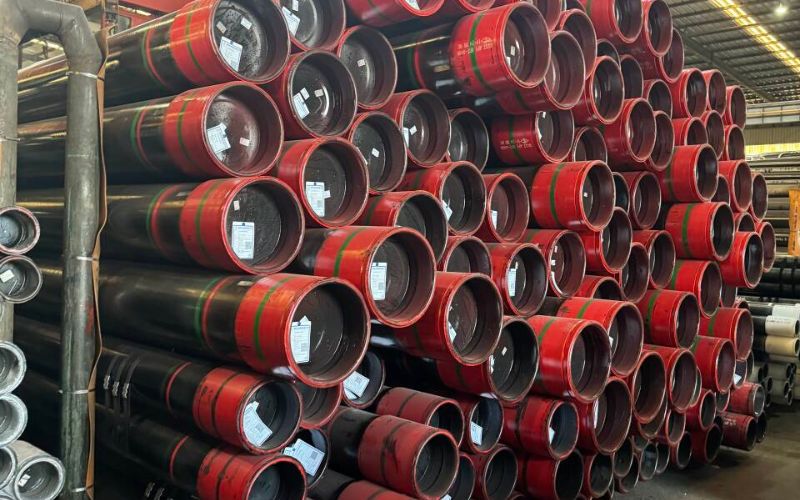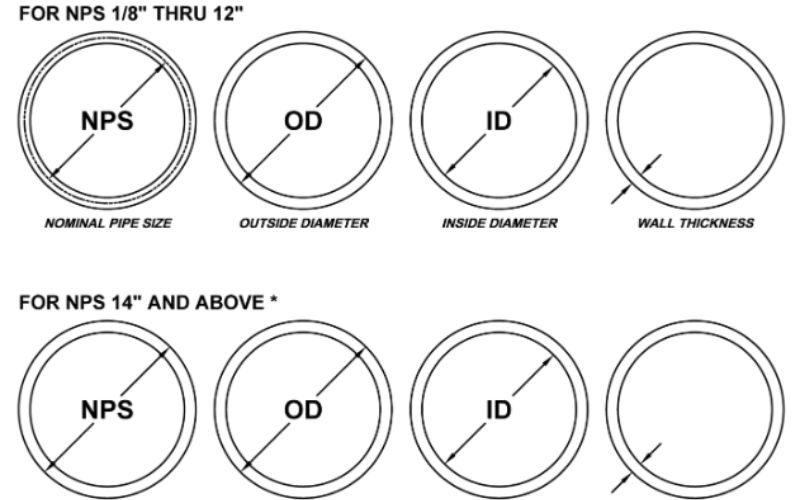For gas pipe installations, safety, durability, and compliance with regulations become the major points of concern, especially for underground systems. One of the most frequent inquiries that come up is whether black iron gas pipe, a material that is often used for gas lines, can be buried underground. This subject is of great concern to the householders, contractors, and anyone dealing with gas system installations, as incorrectly placed gas pipes could lead to costly repairs or even worse safety hazards. We will reveal the truth regarding the use of black iron gas pipe in underground applications, talk about its benefits as well as its limitations, and also consider other options that are more suitable for underground use. Ultimately, you will have a good grasp of the factors that can facilitate safe and efficient installation of underground gas pipes.
Introduction to Black Iron Gas Pipe
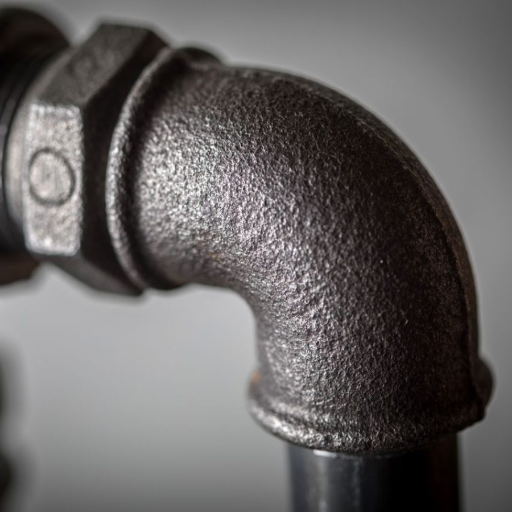
Black iron pipe for gas applications is a typical selection because of its strength, long life, and low cost. This material has high pressure and heat resistance; thus, it is most commonly used in above-ground applications. On the other hand, black iron pipe is not very suitable for underground applications unless corrosion protection is applied, as it is prone to rusting in moisture and soil chemicals. However, the use of specialized coatings, protective wrapping, or selecting corrosion-resistant alternatives, such as polyethylene or coated steel pipes, is essential for reliable and safe underground installations. Always check local building codes and regulations to make sure that the materials you selected for the gas systems are compliant.
What is Black Iron Pipe?
Black iron pipe, a pipe configuration, is extensively used in various configurations, including residential, commercial, and industrial, for the movement of natural gases and propane. The name might mislead you, but black iron pipe is not iron at all; rather, it is mild steel coated with dark iron oxide, which gives it the characteristic black look. Its qualities, such as durability, heat resistance, and low cost, have become its merits in gas systems, making it a popular choice. On the other hand, water cannot be transferred through black iron pipes because they are prone to corrosion if moisture is allowed to be in constant contact. Such pipes are readily available in all sizes and can be threaded to provide secure connections, thus ensuring gas systems installations that are strong and long-lasting. Maintenance and protective measures are of utmost importance, particularly for underground applications, since the pipe must be sheltered from environmental factors that hasten rust and degradation.
Common Uses of Black Iron Pipe in Gas Piping Systems
- Residential Gas Lines – Black iron pipes are the most commonly used materials for supplying natural gas or propane to stoves, water heaters, and furnaces in residential buildings.
- Commercial Building Gas Distribution – Durability and capability to handle high pressure, these pipes are preferred for gas distribution in large commercial and industrial sectors.
- Restaurant Kitchens – Black iron piping is the best for the main gas line and cooking equipment availability because of its sound connections and safety in the commercial kitchens.
- Industrial Heating Systems – Black iron pipe is the main pipeline for gas that manufacturers, and other industrial setups often depend on for power to heating systems and machinery with high efficiency.
- Outdoor Gas Lines – Since it is rust-proof and weather-resistant, the black iron pipe is suitable for outdoor applications such as transporting gas to grills, fire pits, and patio heaters.
Benefits of Using Black Iron Pipe for Underground Installations
- Durability – Black iron pipe is a robust and vibrant material, which is to say nothing of its durability underground, where pressure and factors such as heat can be extreme.
- Corrosion Resistance – If the black iron pipe is coated or treated well, it will be highly resistant to corrosion, thus enabling its use in underground situations for a long time.
- Cost-Effective – Black iron pipe is less expensive than other options, yet its use in underground installations still offers an excellent balance of performance and low cost.
- High Temperature Tolerance – Black iron pipe can withstand high temperatures, which is why it is the best choice for underground systems that may be subjected to heat variations.
- Versatility in Application – It can be applied in various underground situations, the most common of which might be the transportation of gas or water lines, hence its popularity among different industries.
Can You Bury Black Iron Gas Pipe?
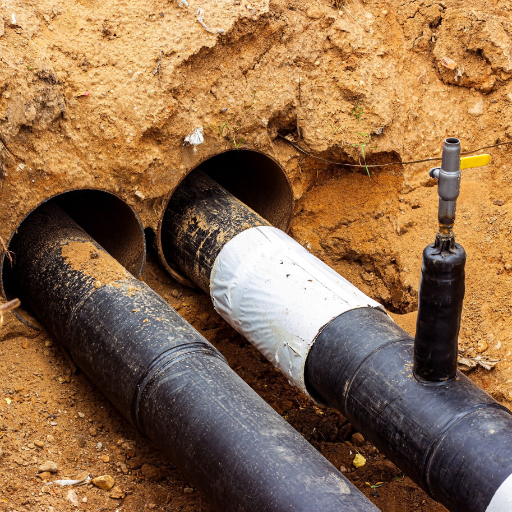
Indeed, black iron gas pipe can be placed underground but it needs proper care to avoid rusting. To guarantee long life and safety, the pipe should be prepared with a sealant, such as tape or special coatings, and located in a trench designed to keep it dry and free of excessive pressure. Local building codes and regulations vary, so always check them as they might stipulate extra conditions for disposing of black iron gas pipes.
Regulatory Standards for Burying Gas Pipe
When gas pipes are buried, it is necessary to follow a series of regulatory standards and guidelines, taking a safety-first approach. Most installations require that buried piping – such as black iron gas piping – be performed with anti-corrosion materials and at a specified depth, usually 18 to 24 inches below the surface, depending on the local codes. A protective covering or wrapping may also be an additional requirement to insulate the pipe from damage resulting from soil movement or outside forces.
It is essential to highlight and map the position of the buried pipe to avoid unintentional damage during the subsequent excavation. Sometimes utility warning tape or tracer wire is installed for this purpose. To make sure the gas pipe is leak-proof and safe for use, pressure testing might be done before and after installation according to the regulations. To ensure that the project meets local building codes, homeowners and builders need to check with their local gas utility provider or building authority before proceeding with the project.
Conditions for Safe Burial of Black Iron Pipe
To bury a black iron pipe securely, proper guidelines must be adhered to to avoid corrosion and ensure the pipe lasts for a long time. The first thing to do is to coat or wrap the pipe with a protective material, which can be either epoxy or polyethylene tape, and this will keep the pipe away from the soil and moisture which are the two leading causes of rust and decay. Moreover, the pipe should be laid in a proper bedding material, such as sand or fine gravel, which will not only give a stable and cushioned base but also reduce the external pressure acting on the pipe. Installation of sacrificial anodes as part of a cathodic protection system can be an effective way of dealing with electrochemical corrosion in some soil.
The depth of burial is another major factor that has to be considered and this is usually at least 12 to 24 inches deep, depending on local regulations and possibilities of surface activities like digging or heavy load traffic. It is very advisable to use tracer wires or utility warning tapes to help locate the pipe for future maintenance or repairs in case of any. Black iron piping meant for gas should always go through pressure testing during installation for the purpose of verifying its integrity and leaks prevention before connecting to a gas system. Verification of compliance with all local, state, and federal building regulations is a must to confirm the proper burial procedure.
Risks of Burying Black Iron Pipe Underground
The underground installation of black iron pipe brings with it a list of risks, the main one being corrosion. All the moisture, soil chemicals, and ground movements would eventually lead to the deterioration of the black iron pipe. This would result in reduced strength and even pipe failure in some situations. Furthermore, the lack of proper coating or wrapping makes the pipe more prone to rust, which could significantly shorten its working life. Since the pipe is not visible, corrosion or damage might occur at the underground level without being noticed. This will likely lead to the issue getting so bad that only expensive repair or replacement can be done by the time it is spotted. Such risks make it mandatory to use protective measures, or even better, to consider corrosion-resistant pipes as an alternative for underground installations.
Best Practices for Underground Gas Pipe Installation
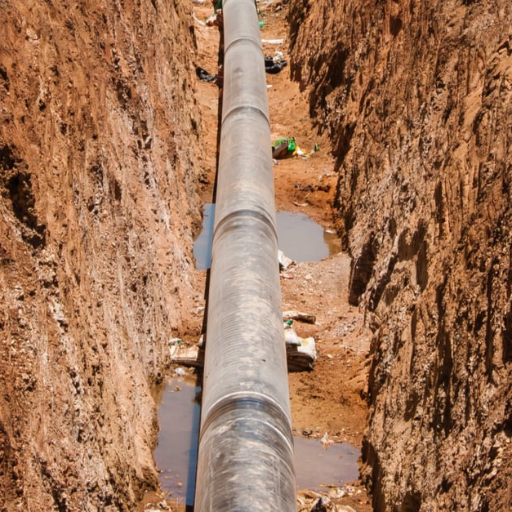
| Practice | Description |
|---|---|
| Use Corrosion-Resistant Materials | To lessen the chance of rust and degradation, select the corrosion-resistant materials for pipes like polyethylene or coated steel. |
| Apply Protective Coatings | Ensure all metallic pipes are covered with appropriate protective materials to completely prevent exposure to moisture and corrosion. |
| Install Cathodic Protection Systems | Corrosion can be prevented on metallic pipes by means of cathodic protection which reduces the electrochemical reactions in the pipeline. |
| Proper Burial Depth | Burial of pipes at the prescribed or recommended depth will make them less vulnerable to external pressures and the surrounding environment. |
| Conduct Regular Inspections | Introduce a routine inspection and maintenance schedule which will allow for the early detection and addressing of potential issues. |
| Follow Local Codes and Standards | Always comply with local codes and industry standards to guarantee safe installation practices and ensure compliance. |
If you put these practices into effect, it will not only protect and make the underground gas pipelines last longer but also save money in the long run through reduced risks.
Choosing the Right Soil Type for Installation
The choice of soil type is key in the underground gas pipeline installation process. The perfect soil would be stable, well-compacted, and have no large rocks or debris that could harm the pipeline. Sandy or clay soils can be acceptable if they are compacted well. However, it is essential to control the conditions to prevent them from becoming too loose or waterlogged, as these could compromise stability. Moreover, placing backfill materials like clean sand or gravel around the pipeline can not only protect it but also guarantee even weight distribution. Correct soil selection and preparation techniques can thus minimize pipeline damage, increase their lifespan, and keep them safe over the years.
Steps for Installing Black Iron Pipe Underground
-
- 1 Plan and Obtain Permits Start with planning the pipeline route and checking the local regulations. Get all the permits needed to meet the requirements for building codes and safety standards.
- 2 Mark the Pipeline Path Mark the ground with chalk or flags where the black iron pipe will be installed. Confirm that the route gets around underground utilities by reaching out to the local utility locating service.
- 3 Excavate the Trench Cut a trench along the marked path, while keeping the recommended depth limits. The trench has to be deep enough to protect the pipe from outside impacts and bad weather.
- 4 Prepare the Trench Cover the trench bottom with a layer of clean sand or gravel to make a stable and protective foundation for the pipe.
- 5 Cut and Thread the Pipe First, find out how much pipe you need for the route, then cut and thread the black iron pipe accordingly. Utilize cutting and threading machines that are specifically designed for this kind of work.
- 6 Connect Pipe Sections Join the black iron pipe sections together with threaded fittings. Make sure every connection is tight and secure, applying either pipe joint compound or Teflon tape to avoid leaks.
- 7 Apply Protective Coating The pipe should be covered with a corrosion-proof substance that is suitable for underground applications. This will keep the metal protected from the moisture and chemicals in the soil that could cause rust.
- 8 Position the Pipe in the Trench Place the interconnected pipe in the trench that has been prepared, making sure it is properly oriented and is supported by the sand or gravel bed.
- 9 Backfill the Trench Use clean sand or gravel to cover the pipe and then backfill the trench with soil. Compress the soil at intervals to firm up the pipe and prevent moving.
- 10 Test the Pipeline After the installation, the pipeline should be tested for leaks or pressure drop. Make the needed adjustments or repairs before the installation is considered complete.
- Restore the SurfaceReturn the area to its original state by replanting or resurfacing any landscaping or pavement affected during the digging. Also, check that the surface is level and safe.
Importance of Tracer Wire in Gas Pipe Installation
Tracer wire is an essential component in the underground gas pipeline network maintenance not only to guarantee safety but also to increase efficiency. Usually, this wire accompanies the non-metallic gas pipes allowing easy detection by electronic equipment. The identification of these buried pipes without tracer wire would be pretty challenging and thus, the risks of disrupting the pipe’s integrity during excavation or construction would be returned.
If gas pipelines are not located correctly, there is a significant risk of accidental damage, which could result in gas leaks, service interruptions, or even dangerous blasts. Tracer wire’s presence is more and more urgent as the industry moves to the use of strong polyethylene pipes which are non-conductive by nature. The use of tracer wire ensures that during an emergency utility workers and contractors can respond quickly, safety regulations are met, and long-term operational efficiency is the order of the day.
How to Protect Black Pipe Underground
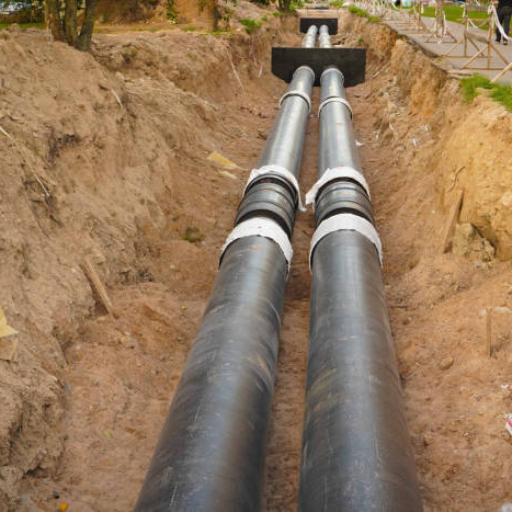
Apply a Protective Coating
To prevent the black pipe from being affected by soil and moisture, use a corrosion-resistant coating or wrapping like asphalt-based or polymer coatings.
Install a Cathodic Protection System
Use sacrificial anodes or an impressed current system to stop electrochemical corrosion of the buried pipe.
Ensure Proper Bedding
To prevent physical damage from sharp rocks or shifting soil, place the pipe on a stable, non-abrasive surface like sand or pea gravel.
Utilize Sleeving
To keep the pipe safe from corrosive elements, wrap it with polyethylene or PVC sleeve.
Inspect and Maintain Regularly
Plan and carry out periodic inspections to look for damage or corrosion and take corrective action immediately to prolong the life of the pipe.
If you adhere to these instructions, the underground black pipes will be more durable and safer.
Methods for Corrosion Protection
To protect pipes from corrosion effectively, the following methods should be taken into consideration:
- Apply Protective Coatings: Shield the pipe’s surface from moisture and chemical exposure by using coatings such as epoxy or polyurethane.
- Use Cathodic Protection: Decrease corrosion by installing sacrificial anodes or using impressed current systems that redirect electrical currents away from the pipe.
- Ensure Proper Drainage: By maintaining effective drainage systems that prevent water accumulation around the pipe, minimize prolonged exposure to corrosive environments.
- Choose Corrosion-Resistant Materials: If possible, select materials like stainless steel or specially treated alloys for pipes that will be exposed to harsh conditions.
- Inspect and Maintain: Regularly inspect the pipes for early signs of corrosion and carry out maintenance or repairs to avoid further deterioration.
Taken together, these methods improve the lifespan and dependability of pipes in corrosion-prone environments.
Insulating Black Iron Pipe for Longevity
Proper insulation is critical to prolonging the life of black iron pipes, especially in situations where temperature changes and moisture are significant problems. Insulation will keep condensation from forming and thus, avoid rust and corrosion in due time. Fiberglass pipe wrap, rubber insulation, and foam sleeves are some of the materials that can be used to isolate the pipe and protect it from harsh environmental conditions.
When selecting insulation for pipes, make sure that it meets the operating temperature of the pipe and the particular conditions at the installation site. For best results, thoroughly clean the pipe surface to get rid of any existing moisture or debris before installing the insulation. Pipes that are insulated should be checked regularly to see if the material is still intact and to replace it if there are signs of wear or damage. Proper insulation, along with regular maintenance, will allow black iron pipes to perform dependably for a long time, even under challenging conditions.
Regular Maintenance and Inspection Tips
- Inspect Insulation Regularly: Check the insulation for any signs of wear, damage, or moisture buildup, and if any, promptly replace it to keep the insulation functioning effectively.
- Clean Pipe Surfaces: During the inspections, take off dust, grease, or dirt from the pipe surfaces to avoid any corrosion and to ensure that the insulation sticks properly.
- Monitor for Leaks: Regularly check the piping system for leaks, as even minor ones can cause significant problems if left untreated.
- Check for Rust or Corrosion: Inspect for any rust or corrosion, particularly on the exposed areas of the pipe, and take action immediately to stop the process of deterioration.
- Schedule Preventive Maintenance: Set up a regular maintenance timetable that includes all the components, like fittings and joints, to ensure that they are working efficiently and get the necessary repairs or replacements done on time.
Potential Risks and Troubleshooting
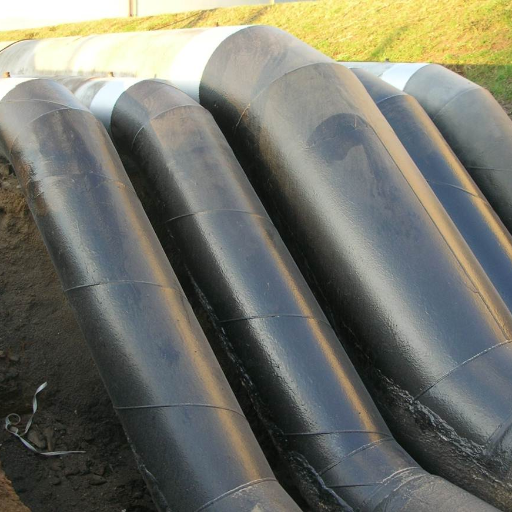
Identifying Leaks in Buried Gas Lines
In order to find leaks in buried gas lines, one should first concentrate on the visible and sensory indications. Unusual dead or discolored vegetation above the pipeline should be a sign for you to consider escaping gas; therefore, you should look for it. Near the line, a hissing or whistling sound might be heard which can also be a leak. Meanwhile, you should check if there is bubbling in the wet or muddy spots above the pipe, as this is often a sign of gas coming out through the soil. Moreover, if you smell gas, it could be a leak, so consider it a sign. In such a case, do not attempt to use any method that could create sparks and call an expert right away to tackle the matter.
Structural Failures: Causes and Solutions
Structural failures might happen for various reasons, from faulty designs to changes in the environment. The main reasons are usually bad design or wrong calculations, the use of materials that do not meet the required standards, and maintenance that is not good enough. In addition, disasters like earthquakes, floods, or hurricanes and all kinds of weather might also compromise the integrity of a building or structure.
One of the best ways to prevent structural failure is to have planning and designing done by cautious and experienced engineers who follow safety standards and regulations. Building the structure with the best quality materials and hiring skilled workers are also significant. Moreover, regular inspection and maintenance are of utmost importance as they enable the early detection of and solutions for possible wear and tear or other issues. For people to live in an area with high seismicity, it would be wise to introduce specialized reinforcements and the use of resilient construction techniques to reduce the risk of failure considerably. Paying proper attention to these elements will not only ensure safety but also increase the lifespan of the structure and keep the occupants’ health and well-being intact.
When to Call a Professional Installer
If I notice any structural damage, severe wear, or issues beyond my skill level, I will definitely refer to a specialist for the installation. The installers have the rights, qualified personnel and tools to execute the repairs or installations correctly and, more importantly, safely.
Reference Sources
- Texas A&M University – Underground Piping Installations Design Standard – Underground Piping Installations This document provides guidelines for underground piping installations, including inspection and material requirements.
- National Academies Press – Corrosion Protection for Buried Steel 5 Corrosion Protection for Buried Steel This chapter discusses methods for protecting steel from corrosion, which is relevant to the use of black iron pipes underground.
- University of Houston – Facility Natural Gas Piping Facility Natural Gas Piping This resource provides specifications for natural gas piping, including considerations for buried installations.
- Black Steel Pipe Supplier In China Guide for Black Pipe Fittings
Frequently Asked Questions (FAQs)
Can You Bury Black Iron Gas Pipe?
Indeed, it is possible to bury black iron gas pipe, but it needs to be coated and protected correctly to ward off rust. Besides, it is a good practice to consult with the local gas utility company for the exact regulations concerning underground installation.
What Kind of Pipe to Bury for Gas Lines?
Polyethylene plastic gas pipe and coated steel gas pipe are the two types of pipe which are most often approved for burial. These materials are prepared to endure the underground conditions while safeguarding safety and functionality.
What Type of Fittings Are Used with Burying Gas Pipe?
It is necessary to use special fittings approved for underground use when burying gas pipe. Among them, connectors and couplings that are aimed at preserving the gas line’s integrity while underground might be mentioned.
What is the Purpose of Tracer Wire for Buried Gas Pipe?
Utility companies will use tracer wire to identify the precise location of the buried gas pipe and, thus, it will be quicker for them to come to the line during maintenance or repair work. This is a safety measure that is very important in underground gas installations.
How Deep Should Gas Pipe Be Buried?
Depending on the place and local regulations, the depth of the buried gas pipe zone varies. In general, it lies between 12 and 24 inches minimum depth, depending on the pipe type and the surrounding area.
Does the Natural Gas Utility Require Specific Installation Methods?
The natural gas utility company usually requires installation methods that comply with the fuel gas code. Therefore, it is vital to observe these recommendations for the sake of safety and compliance with the regulations.
Always prioritize safety when working with gas pipe installations. Consult with licensed professionals and local authorities to ensure compliance with all regulations and building codes.



